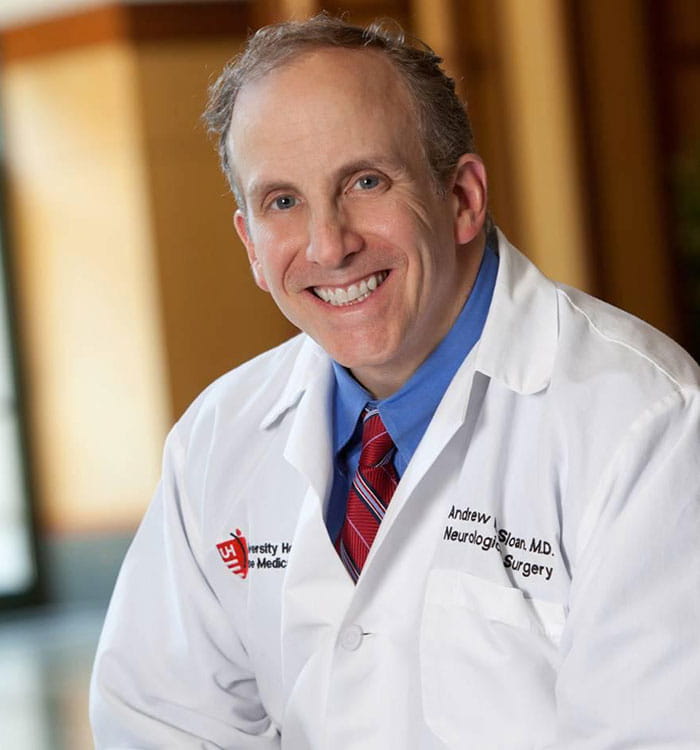CETNO Advances Brain Tumor Translational Research from the Basic Science into Clinical Care
July 26, 2020
UH Research & Education Update | July 2020
CETNO is in a unique position to change the standard oof care for brain tumors,” says Andrew Sloan, MD Director, Brain Tumor and Neuro-Oncology Center, UH Cleveland Medical Center, and Professor, Case Western Reserve University School of Medicine. "The fundamental issues with brain tumors are that they are rare, severe and the standard care is complicated. The need to advance brain tumor treatments and change the standards of care is imminent.“
 Andrew Sloan, MD
Andrew Sloan, MDThe Center for Translational Neuro-Oncology (CETNO) will promote team science and integrate various departments and institutes in the investigation of streamlining brain tumor patient care and the development of better treatments and more patient-specific treatments. >CETNO also aims to provide access to more early-phase clinical trials and develop a patient-centric toolkit.
Typically, patients are diagnosed with a brain tumor one-two months before treatment begins. Unfortunately, this timeline is not acceptable for the most common and malignant brain tumor, glioblastoma (GBM), with the median survival rate of one year. Dr. Sloan's goal is to use the community's expertise and knowledge to determine faster and more streamlined care for patients with brain tumors. Physicians often consider brain cancer as an orphan disease because fewer research centers focus explicitly on brain tumors. In addition, some cancer treatments are used for a variety of tumors except brain tumors. However, these treatments, including cellular CAR-T cell therapy, may be adaptable to treat brain tumors. CETNO physician-scientists are also modeling new types of bioinformatics to determine which patients will respond to which treatments. New imaging paradigms and a liquid biopsy test are also in development to help tell us the difference between a patient who is getting side effects from treatment and patients with a recurrent tumor. "We run the gamut of basic to clinical research," explains Dr. Sloan.
CETNO also plans to spin out more early-phase clinical trials. For example, UH is one of only four sites chosen to participate in a Phase II clinical trial to test the safety and efficacy of oncolytic polio/rhinovirus recombinant in patients with recurrent malignant GBM. As a result, UH is administering the polio vaccine clinical trial to obtain efficacy data before the FDA approves the use of the virus as a treatment for brain tumors. CETNO will continue to drive other clinical trials focused on glioma stem cells and immunotherapy for GBM.
The creation of a CETNO ToolKit aims to help answer four patient-centric questions 1) how can we make surgery better and safer, 2) what is the prognosis, 3) what is the best way to treat my tumor and 4) how do we know if the treatment is working? With regards to making surgeries better and safer, Dr. Sloan and colleagues are testing the use of MRI thermography to help perform surgery. Also, a virtual reality platform is used to simulate brain surgeries to educate both physicians and patients.
Overall, the establishment of CETNO is what Dr. Sloan calls a win-win opportunity, "We think this is a win-win situation. Patients win by receiving the latest and greatest care. Seidman Cancer Center wins because it will help us treat patients better and develop a reputation for being a great treatment center, and UH wins as it builds its program with expertise.
Tags: Brain Tumor, Quality Care


